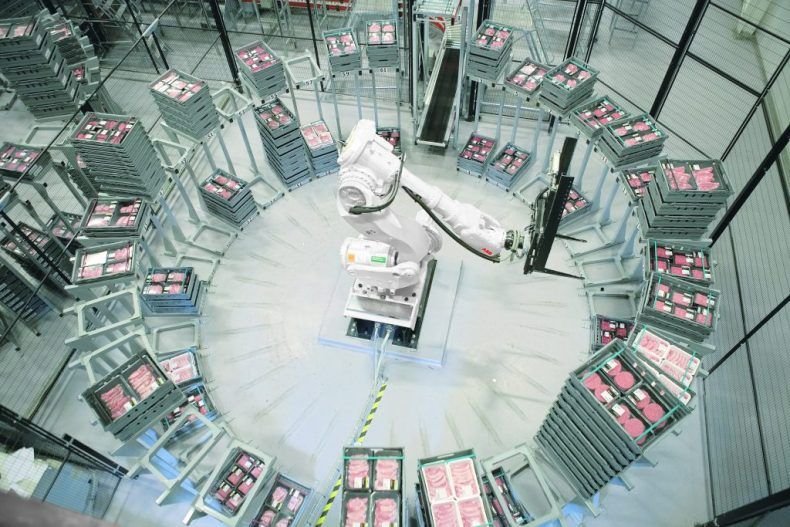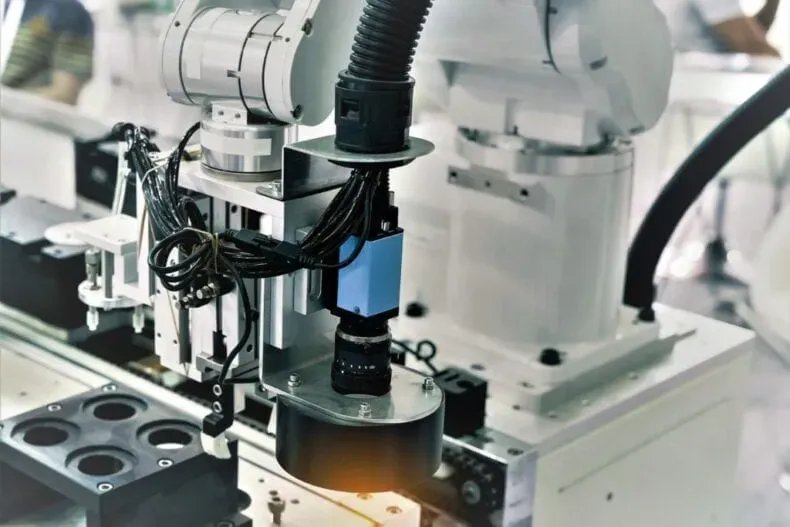What is Robotic Palletising?
Robotic palletising refers to the use of robots to stack products onto pallets. The process is essential in industries where products need to be packaged, transported, and stored. Industrial robots are equipped with sensors, cameras, and sophisticated software, enabling them to perform complex tasks quickly and accurately. These robots can handle a wide range of products, from small items to heavy machinery.
The Advantages of Robotic Palletising
Robotic palletising offers several benefits, including efficiency, cost reduction, and increased productivity. With this, businesses can produce and distribute goods faster and save time and money. It also reduces the risk of workplace injuries and creates a safer work environment for employees.
Additionally, it provides flexibility by allowing businesses to easily switch between products and pallet configurations, and produce custom pallets to meet the unique needs of their customers.
What Industries are Robotic Palletising for?
Robotic palletising is a versatile technology that has gained widespread adoption in various industries, such as food and beverage, pharmaceuticals, automotive, and logistics. In the food and beverage sector, robots are utilised to stack boxes of packaged goods onto pallets efficiently and accurately. By doing so, businesses can increase their productivity and improve their supply chain’s speed and efficiency.
Similarly, in the pharmaceutical industry, robots handle boxes of drugs and medical devices with precision and speed, ensuring safe handling and accurate inventory management.
In the automotive industry, robots play a crucial role in assembling vehicles, including stacking heavy components onto pallets. This helps to reduce human effort and increase production efficiency while maintaining high accuracy and quality control standards. In the logistics sector, robots are used for stacking boxes of goods onto pallets, making the transportation process more efficient, safe, and cost-effective.
The efficiency, flexibility, and safety of robotic palletising are driving its adoption across various sectors, revolutionising manufacturing processes. These systems can work tirelessly and consistently without breaks, increasing production output while reducing labour costs.
Additionally, they are highly flexible and can handle mixed-case pallets, enabling businesses to adapt to changing market demands quickly. The robots’ precision and accuracy also reduce the risk of product damage and workplace injuries, creating a safer work environment for employees.
As technology continues to advance, we can expect further improvements in industrial robots, benefiting all sectors. For instance, robotic palletising systems can be integrated with other technologies, such as artificial intelligence and the Internet of Things, to provide real-time data analytics and predictive maintenance, improving overall operational efficiency and reducing downtime.
Can Robot Palletising Be Considered a Cost-Effective Solution?
Robot palletising is a highly cost-effective solution when used appropriately, primarily because of its flexibility in handling mixed-case pallets. It is most suitable when flexibility and quick changeover are required, for palletising multiple products simultaneously, and when operating multiple shifts per day.
How Can We Help?
At L-A-C Logistics Automation, we deliver custom solutions tailored to your business needs. Our industry expertise allows us to develop a high-performing solution that integrates with your production processes. Our experienced engineers ensure customer satisfaction and offer aftercare and maintenance packages to preserve your system’s value. Contact us today to discuss this further!


